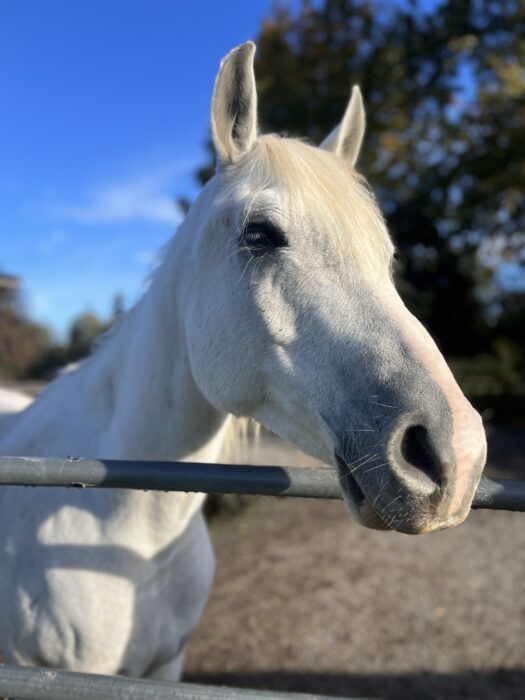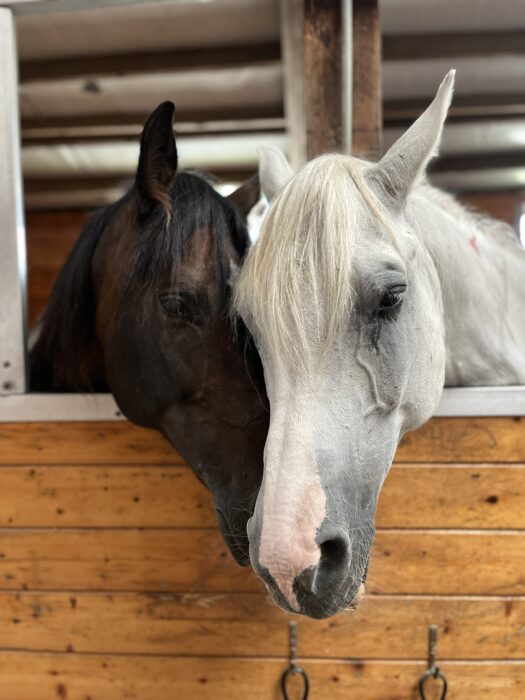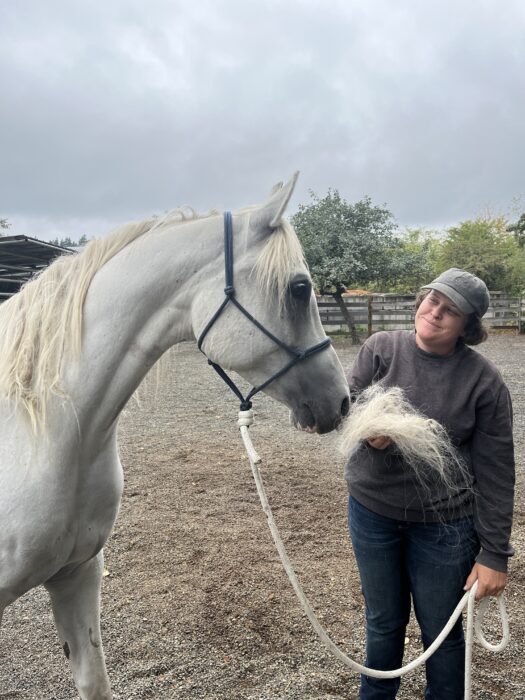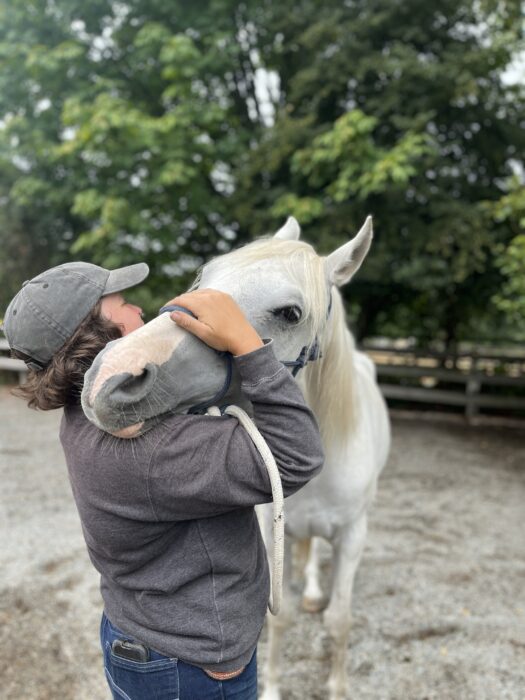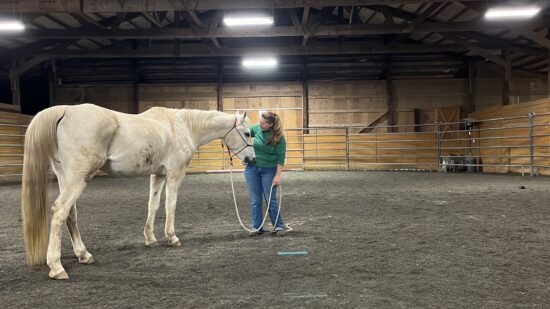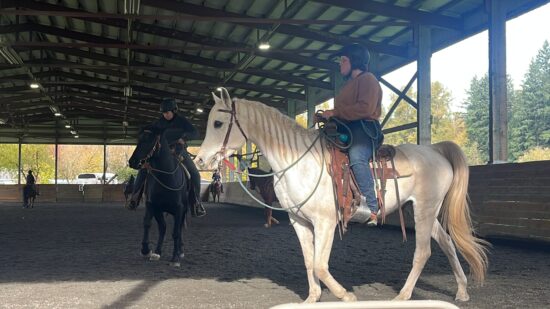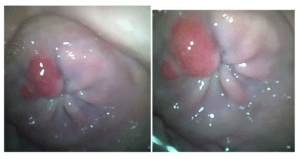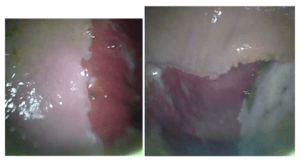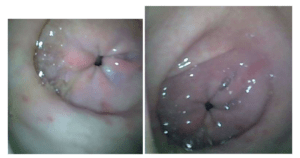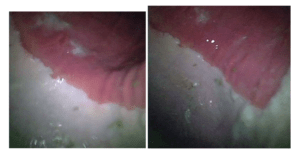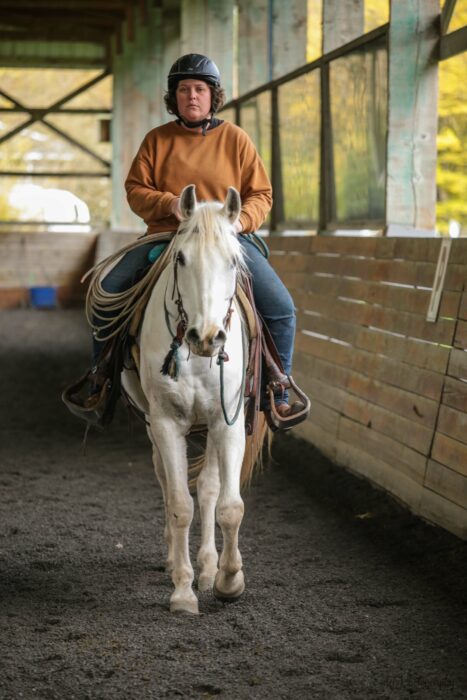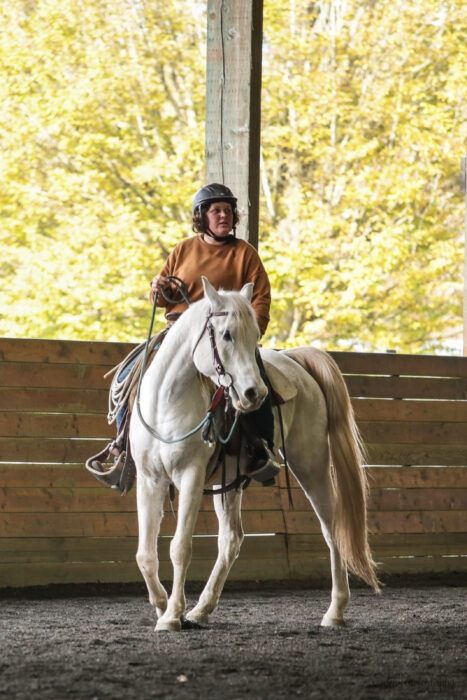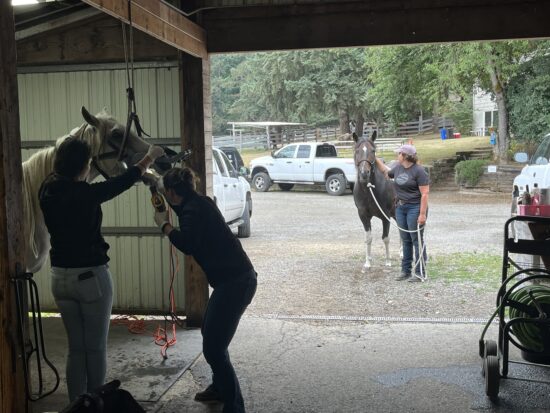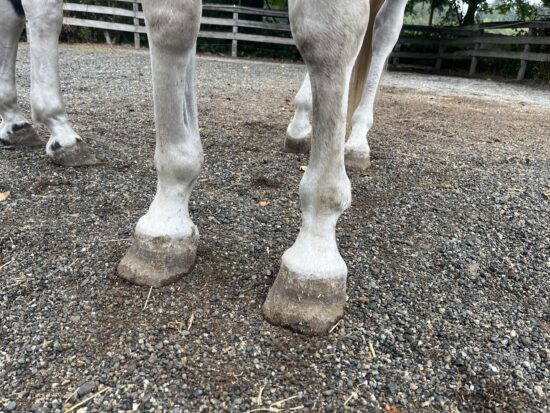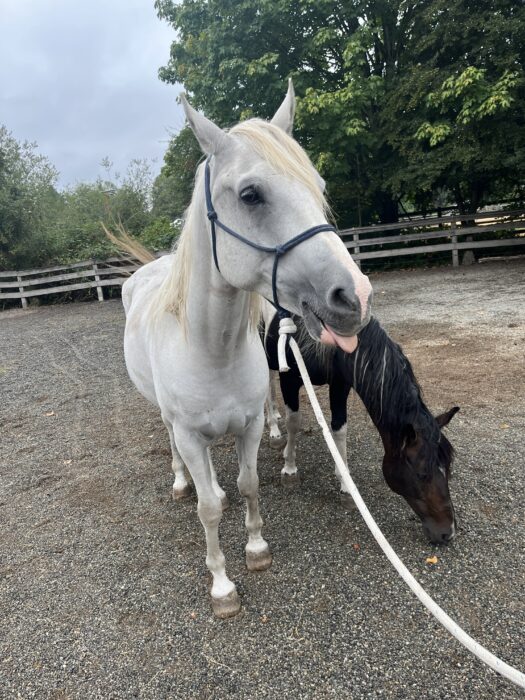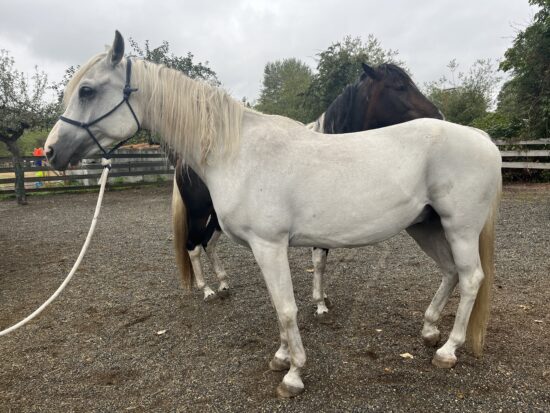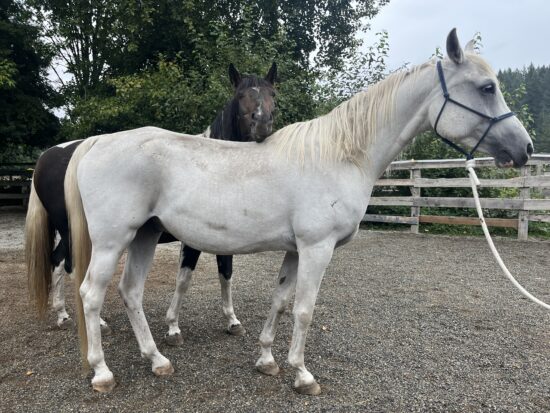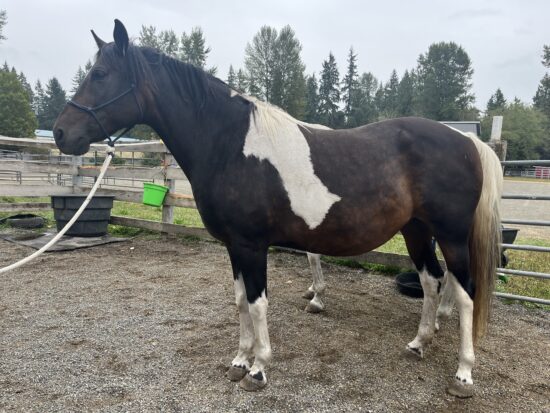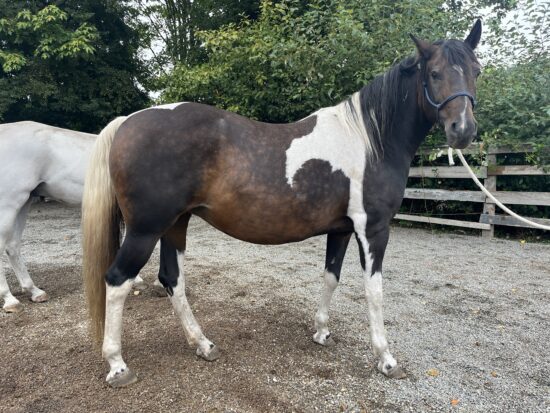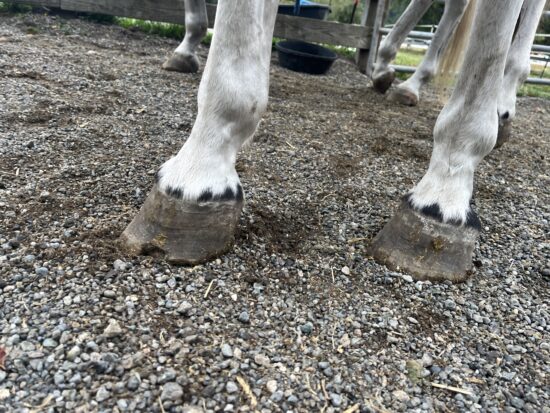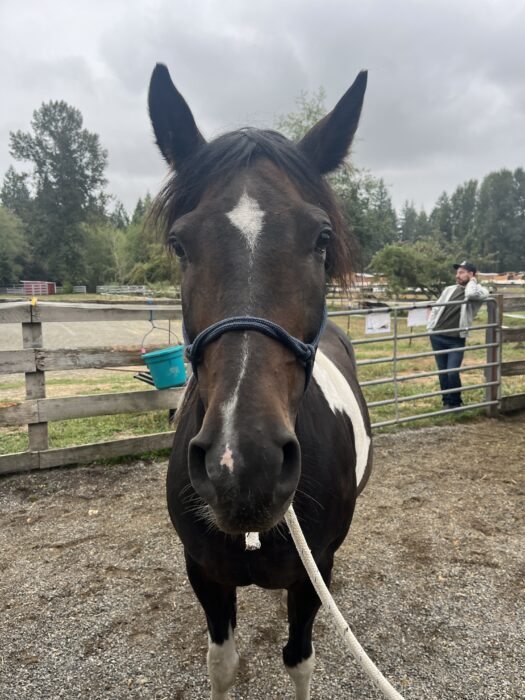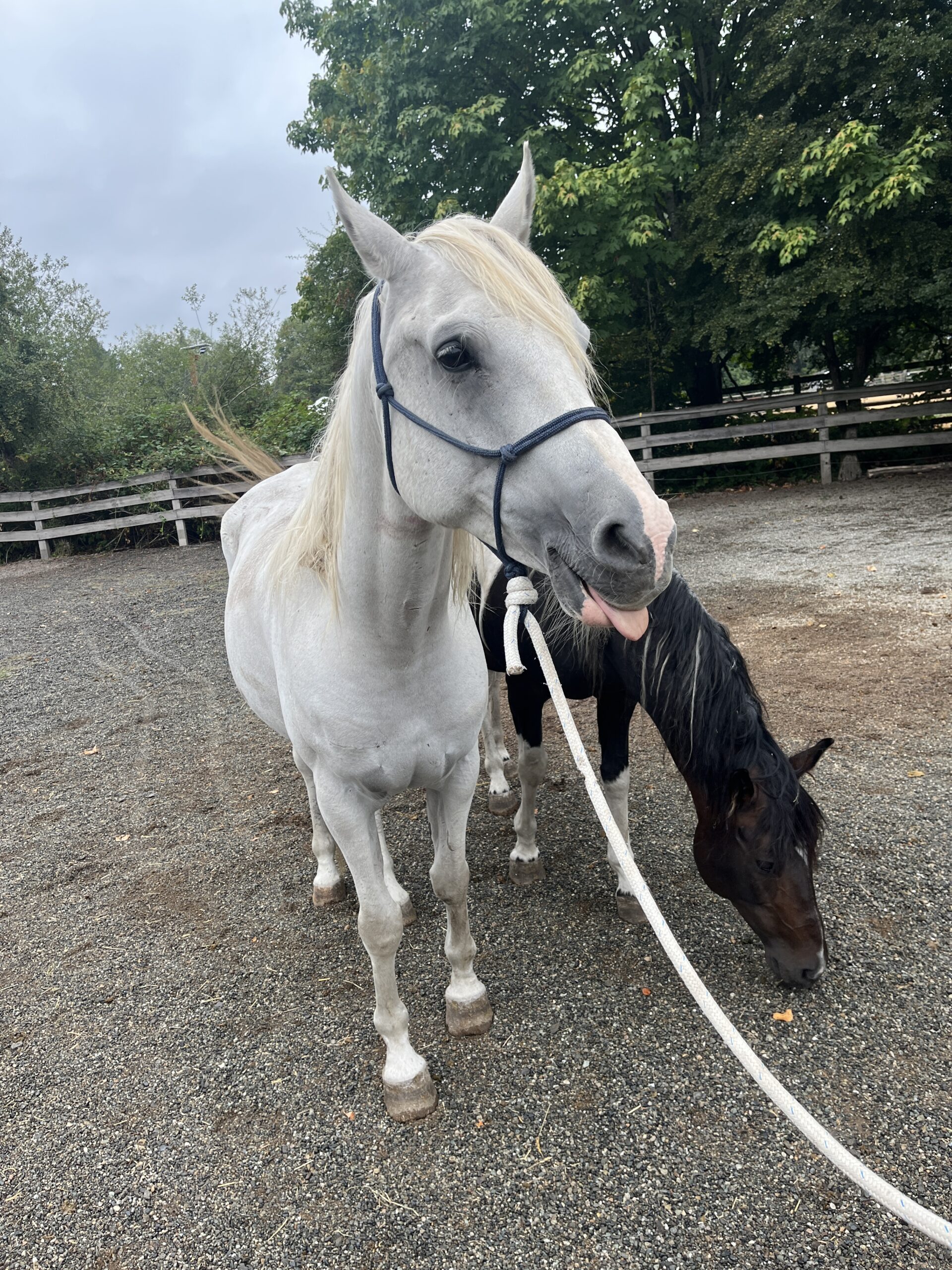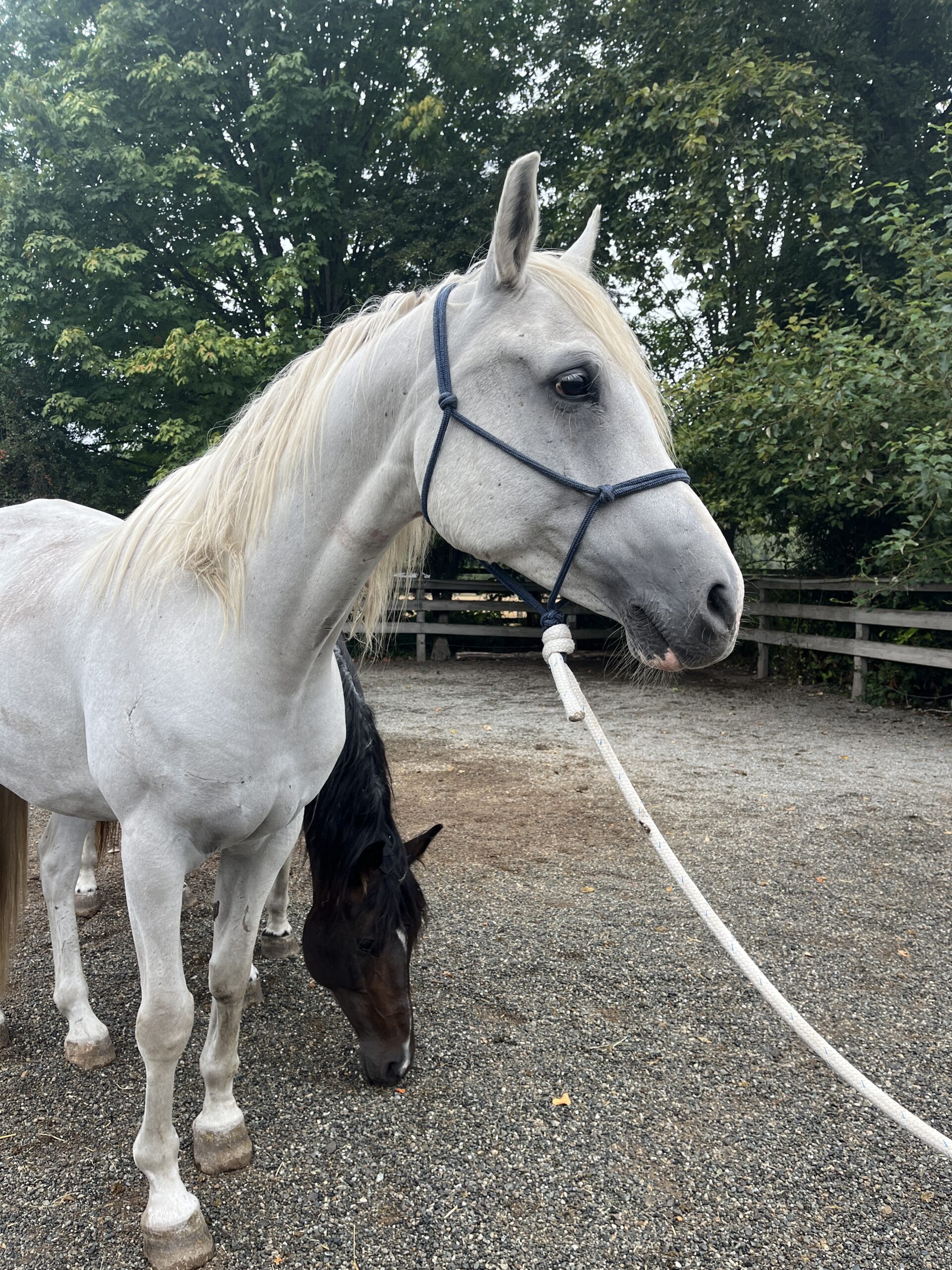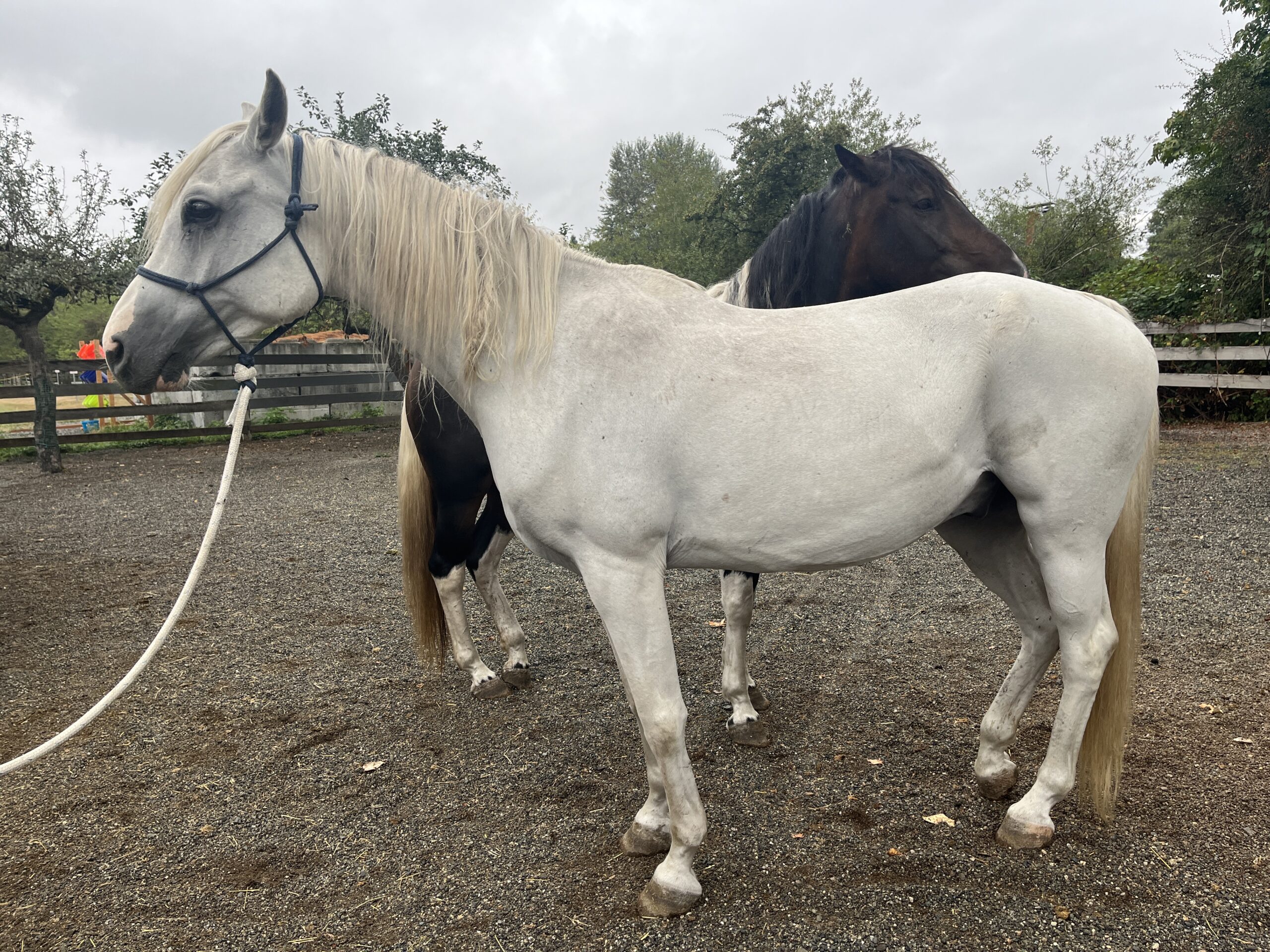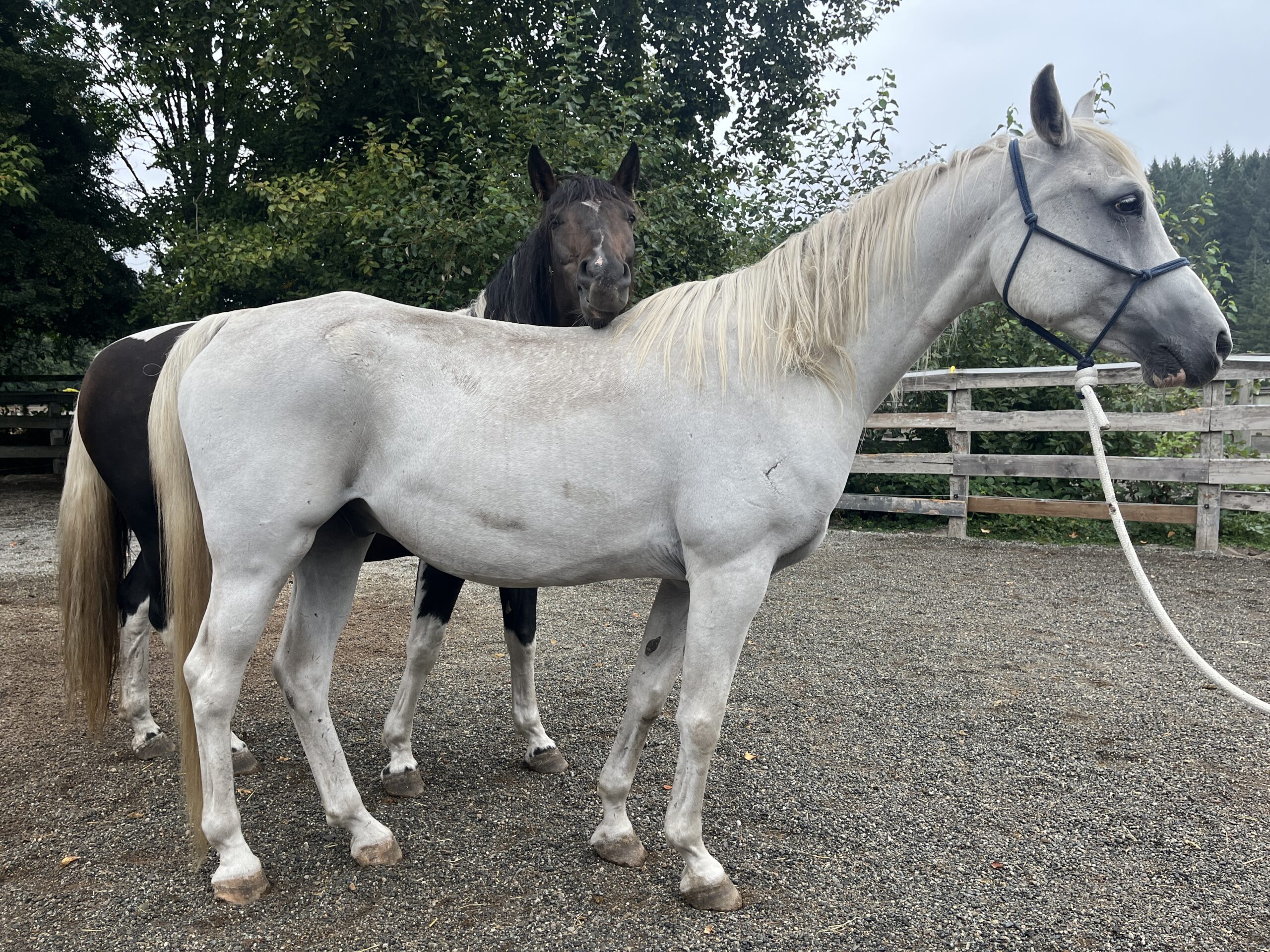Scotty
2010 Grey Arabian Gelding
Registered Name: Destiny’s Scottish Pride
Type of Rescue: Owner Surrender
Intake Date: 8/23/2023
Date of Death: 2/23/2024
Length of Time with SAFE: 6 months
Scotty came to SAFE in August of 2023 along with his half-sister, Violet. The two were previously owned by a gentleman who passed away, leaving their care and keeping to his elderly wife. She was reaching a point where she felt unable to provide the horses with adequate care, and therefore was helped by her daughter to contact SAFE to see about assisting with the horses. During his six months at SAFE, Scotty experienced three bouts of colic and was also diagnosed with an ulcer. After Scotty’s third episode of colic, and taking into account his overall quality of life, it was determined that the most caring option was to humanely euthanize Scotty.
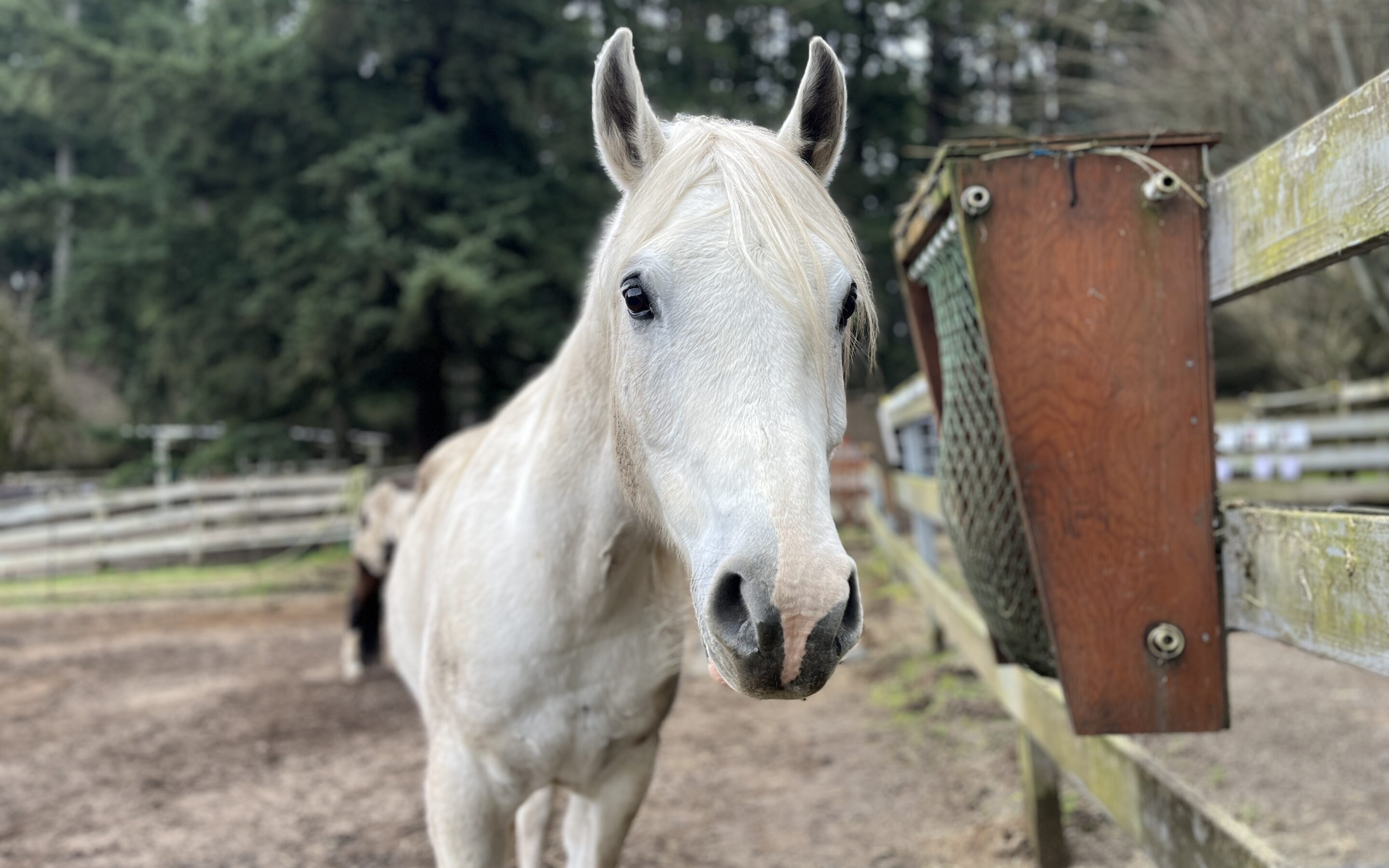
Rest in Peace, Scotty
It is never easy to announce the passing of one of our horses, and harder still when the passing is so unexpected. Scotty left this earth last week, following a sudden and painful colic. This was his third colic in five months, in addition to the ulcers we had been trying to help him combat. Clearly, Scotty’s GI system was not a happy one, but last week’s battle was the last it will ever have to fight.
When Kaya arrived at the barn last Friday, Scotty was standing in his stall, head hung low. For anyone who has ever seen Scotty in the AM, you would know how eager he is to get outside to his turnout. Not so on that day. After taking vitals, where we found his temp to be very low (96) and his gut sounds to be reduced, we called our vets at Rainland and got the OK to give banamine. As if sensing we were on the phone with the vet, Scotty went down in his stall to further tell us that something was not right.
We brought him out to the round pen to better monitor him, and to keep him away from potentially casting himself in his stall. In the roundpen, he wanted to lie down again, and because he was not thrashing or going from up to down in quick succession, we allowed him to rest, which he did for the entire hour while we waited for the banamine to kick in. Even though he was lying quietly, there was no doubt in anyone’s mind who saw him that he was clearly uncomfortable.
An hour passed, and it was clear the banamine had had no impact on Scotty’s comfort levels. When we got him up to take his vitals again, he was incredibly reluctant to rise. He was also trembling, and while his heart rate was still technically in normal range (40), it was incredibly apparent that he was not feeling anywhere close to good.
The vet arrived, and as she was getting his vitals, Scotty had a reflux. As we pivoted to tubing him, his trembling increased, and while sedation helped him feel that he didn’t have to lie down, it was not helping his shakes. The vet was also struggling to place the tube, which she felt was indicative of a potential larger problem. His temperature, that she managed to get before the reflux began, was still very low.
Sometimes, even though there is more that technically could be tried, the horse lets you know that they don’t want that. This was one of those times. Even though Bonnie was the one to use her human words to express that we felt it was time to let him go, Scotty was communicating the same thing.
Scotty passed peacefully on a beautiful, sunny day, in the company of a handful of the humans who loved him and with his horse friend Lance nearby to give him additional comfort. It is never easy to have one pass so unexpectedly, but we take comfort knowing that while he was at SAFE, we did what we could to help him be more comfortable in his body and mind as a horse, and that his memory and his sweet, sweet face will live on in the hearts of many.
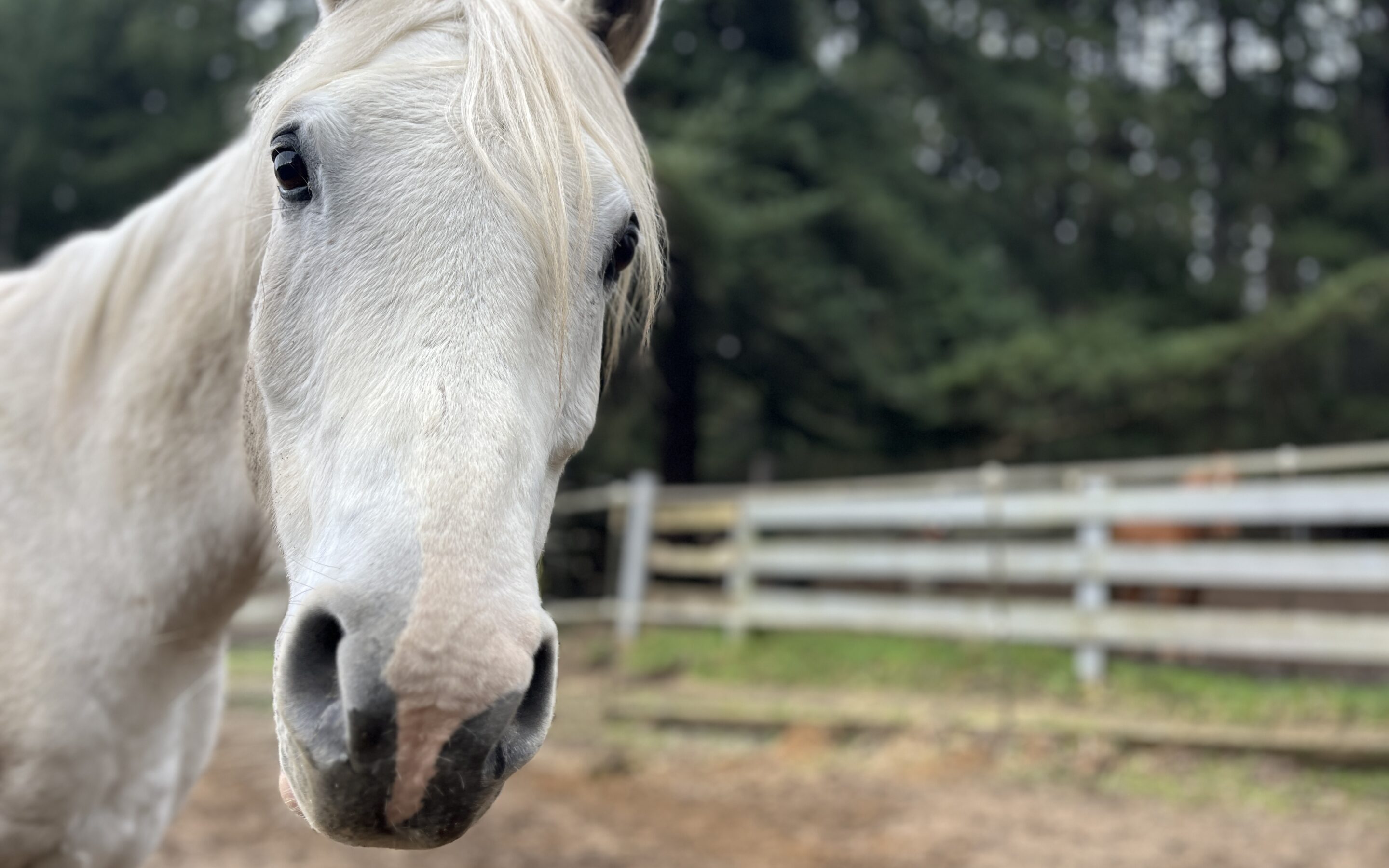
Unicorns Get Ulcers Too
Don’t ever let anyone tell you that unicorns don’t get bellyaches.
Scotty, our grey arab gelding, is short only the horn when it comes to resembling a mythical creature. His stately figure and long, flowing locks are something out of a story book. His personality, too, is somewhat fitting with what you might expect from a creature who has made a job out of leading people to feel it does not exist — somewhat aloof, a bit on the nervous side. But while these traits may be beneficial for unicorns, alas, in the real horse world, they are less desirable. Scotty’s tendency towards anxiety makes him a candidate for the villain of this story: ulcers.
We first noticed something was amiss when he went off his food. On a Sunday morning, our barn staff arrived to greet the day and the horses to find that Scotty still had hay in his net, left over from the night before. He turned up his nose at his morning mash, and once turned out with his breakfast hay, gave it a sniff before excusing himself from the table. Over the course of the day, he was somewhat interested in eating, taking bites here and there, but was not in possession of the vacuum cleaner mentality that most horses adopt around their food. And while it is true that some horses are less enthusiastic eaters than others, Scotty had not before been so disinterested. However, he was drinking water, and he was passing manure of regular consistency and with normal frequency. It did not initially seem so major as to suggest a colic or immediate emergency, and so we kept a close eye on Scotty with our thumb poised over speed dial to our vets.
A call from night check was the determining factor. Scotty was down in his stall — not thrashing, as we have seen in severe colic situations, but clearly not right. We removed his hay (despite his lack of interest, we didn’t want to grant him access in the event it was a colic) and got to work collecting vitals. One vet call and an hour after banamine later, Scotty was up and nosing about for hay scraps. We watched him on the cameras overnight, where he was quiet — no worsening of symptoms. The next morning, he was acting hungry, and had passed manure overnight, which the vet took as good signs. We could begin reintroducing food, beginning with about 1lb of hay, wet down to help increase his hydration. He seemed happy for the snack, and tucked right in, a good sign. In addition to this hay offering, our vet also had us give him sucralfate, in case there was an ulcer component. Foreshadowing!
Typically, in situations such as these, colics or cases where we need to monitor a horse for water intake and manure output and behavioral changes, we would isolate them from other horses. But Scotty, dear Scotty, is the anxious type, and without his friends around, would become even more so. Thus we made the decision to turn him out with his friends, setting up a chair to closely monitor him in turnout throughout the day. He got another small meal several hours after his first, but this one was less interesting to him. While he did initially tuck in, he lost interest after several minutes, and wandered away as he had been doing. He was also exhibiting some minor signs of distress, shifting his weight and stretching his neck, pawing intermittently. The kinds of things that are close to being blink-and-you-miss-it, if not already there. After sending this update to our vets, they had us give him a tube of gastroguard. His discomfort did seem to decrease, and while his appetite didn’t fully return, several hours later he was more interested in food then he’d been earlier in the day. This trend continued, and he did not become more painful or have his symptoms worsen. By morning, he was looking hungry, and tucked into the small amount of food that we offered. He also got another tube of gastroguard, and a date set for a scope to check for ulcers.
At that scope, it was revealed that yes, ulcers were plaguing our sweet Scotty. The main offenders were on his pylorus (glandular ulcers), which tend to be more difficult to treat and more likely to reoccur. We were to continue Scotty on a regime of twice daily sucralfate, as well as a tube of gastroguard once a day for four weeks, and rescope him at that time.
Following this treatment plan, Scotty returned to his normal self. His appetite came back, and he no longer showed signs of pain or discomfort around eating. He didn’t love so much the daily gastroguard, but some patient work surrounding handling his mouth showed vast improvement with his willingness to get a paste appetizer each morning.
The four weeks ticked along, as they are wont to do. At his rescope, there was some pretty significant improvement — though not total resolution — of the ulcers in his pyloric region. His ‘greater curvature,’ a region that includes the squamous mucosa, glandular mucosa, and margo plicatus, looked primarily healthy on both scopes, with one singular spot of ulceration possible on the latter.
- First Scope — Pylorus
- First Scope — Greater Curvature
- Second Scope — Pylorus
- Second Scope — Greater Curvature
After the findings of the second scope, our vets decided to switch up the medication route. Scotty would be given a tab of Misoprostol once every 8 hours. Thanks to a handy-dandy automatic feeder, his middle of the night pill could be administered without a human having to set an alarm. He has been a very good boy about taking this pill out of a horsey pill pocket (hollowed out carrot). We have also introduced Purina Outlast to his diet, and good ole sucralfate remains a twice daily staple.
Scotty will continue to be in work going forward, though we will take it slow. It would be counterproductive to stop work entirely until the ulcers fully resolve, as the reintroduction might cause a flare up. Instead, we are keeping things on the easier side for him as we actively treat.
Scotty’s next scope is in a few weeks time, and we will hopefully see a very happy GI system at that point. In the meantime, we are thankful for the wonder of modern medicine and the guidance of our vets to help us help our sweet, sensitive unicorn boy!
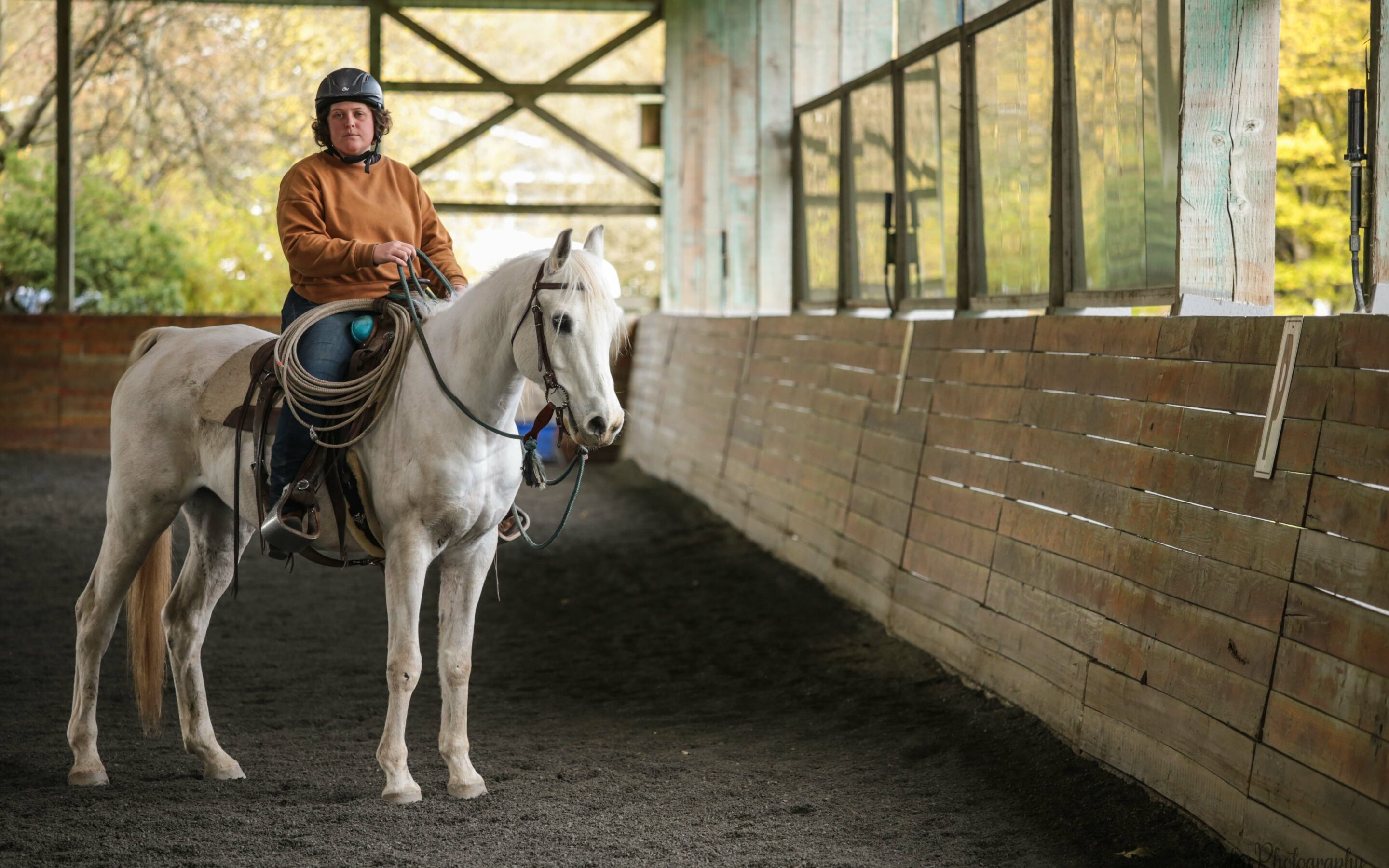
November Clinic Report: Scotty
Kaya M rode Scotty in his first Joel Conner Clinic this past November, and has the following to say about their rides together:
“Scotty really proved that he’s a confident and capable riding horse this weekend! I’d only ridden him a couple times out in the big arena, so I wasn’t sure how he’d handle the big open space, but he was calm and with me even through the wind and downpour. We worked a lot on helping bring his weight off his front end and trying to get him to use his hind to support and balance. Scotty has an unfortunate inclination to trip in the canter, so we’re hoping this preparation and balancing will help him be more steady loping. Scotty is really a special boy and was a pleasure to work with in this clinic! I’m excited to keep working with him and to find his new family!”
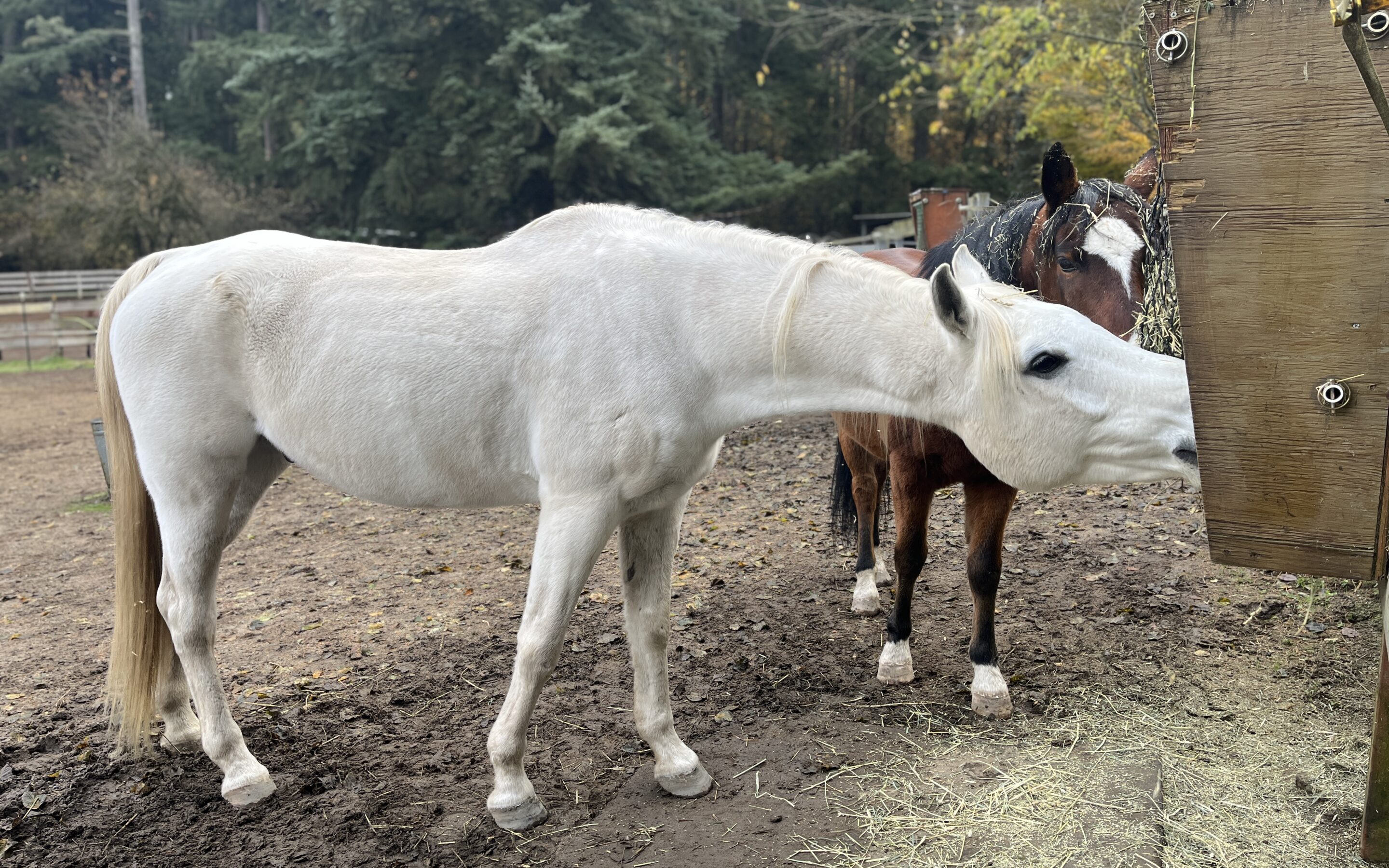
Scotty’s Buddies
Scotty arrived at SAFE with his half-sibling Violet, the two of them essentially attached at the hip. In order to foster new and healthy relationships (and mitigate the herdboundness that existed in each of them), we made a point of introducing them to new friends once they were off their quarantine. Scotty popped over into our ‘boys herd’ (we are a mare-heavy organization, and thus only have one herd of geldings at present) to join the likes of Montana, Artie, and new member Lance.
The day we introduced Scotty was the day that Delcan, another tall gangly arab, left for foster. Although the intricate rituals of nostril-sniffing are beyond our measly human comprehension, it seemed from an outside perspective that, to the horses in Paddock 17, Declan had just changed color. There was no fanfare upon Scotty’s arrival, merely a look from Artie that said ‘why are you introducing me to a horse I already know?’ Montana had similar thoughts, and thus, a new herd was born.
However, interestingly enough, Scotty has usurped Montana as ruler of the pack. He lords over the dirt and hay with the same mostly benevolent leadership that his pinto counterpart showed, though will occasionally move that state-named horse off a haybox just to prove that now he is, in fact, the Primary Mover of Feet. He and Artie have become fast friends, with the two never far from one another during mealtimes, proving that while he may be king, he is not opposed to breaking bread with his subjects.
Scotty enjoys being in a paddock that butts up to one of the Mare Herds, and spends his days checking out the pretty ladies next door. It’s great to see him be such an amicable herdmate, and speaks well to his future as a friend to not only a human, but also to some lucky mare or gelding!
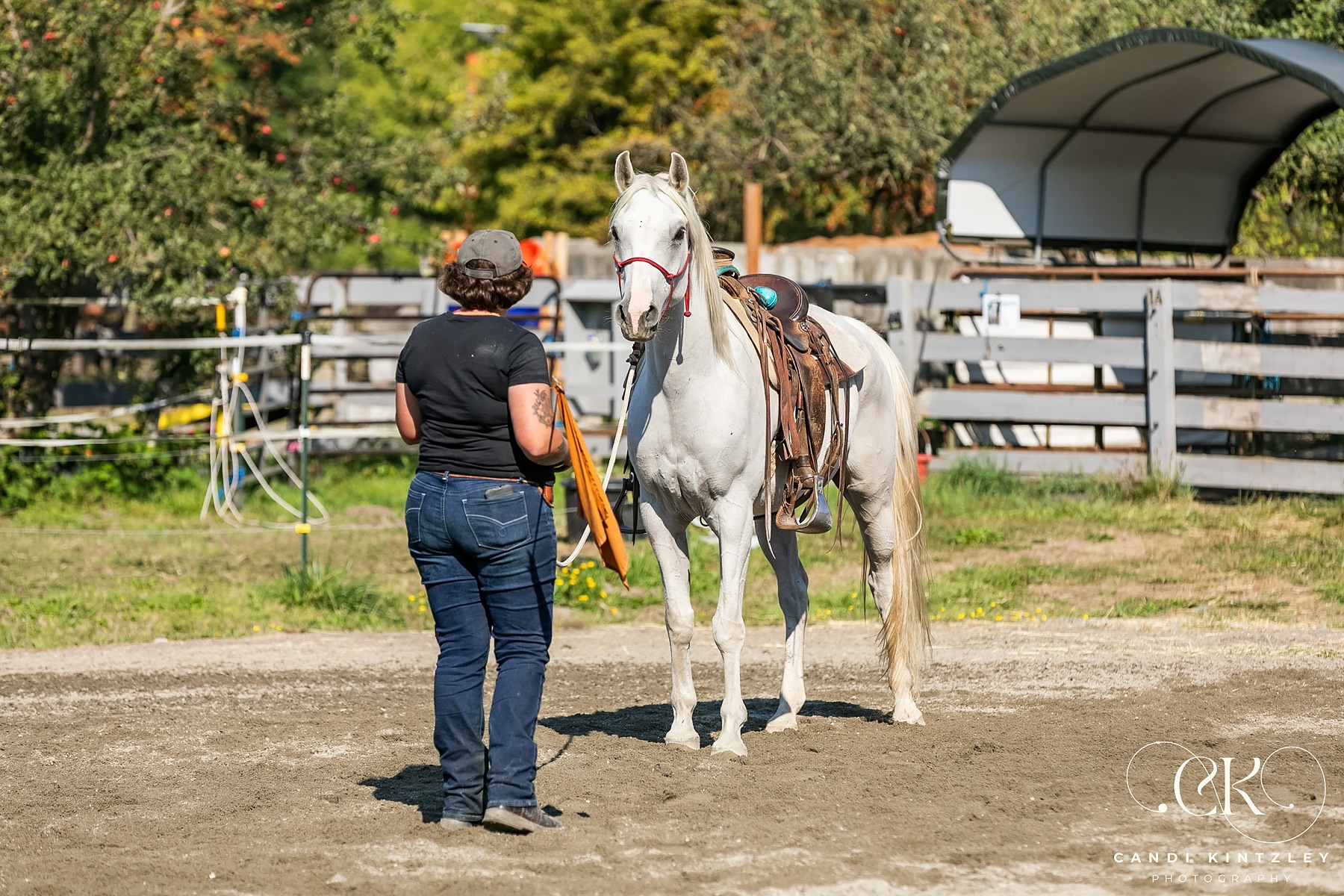
Getting to know Scotty
When we intake a horse who we know for a fact has had a riding background, we are equal parts hesitant and hopeful. There is a chance that what the horse has been taught will make for a relatively easy re-start — the mere fact they have been saddled before eliminates some speculation as to how that is going to go. Of course, there are always many variables that make it so that we always treat a horse upon intake like it is brand new to this world. The process progresses more quickly (in some cases) for those who have prior riding experience, but for some, we find that the horse’s education is akin to a swiss cheese: many holes.
Scotty had been started under saddle, and spent some years in the Arabian show circuit. It had been a while (he last hit the town in 2017), but we were interested to see where he might pick up once we got him going in our program. The answer was: not very far. Scotty is a sensitive lad, and also a bit nervy, as can be common in his breed. While he was able to be cinched up with no issues, it was clear that his groundwork needed help. Which, in turn, meant that under saddle he would have the same braces.
It was clear from the get-go that Scotty lacked appropriate balance. It was easy to tell by his headset. Arabians don’t, in fact, need to keep their heads up like a periscope at all times. He put a lot of his weight on his front end, which in turn meant there was a high chance of him feeling the need to rear when stuck, and moving him out freely in the round pen, he looked fast and panicked in his gaits, another indication of poor balance.
But Scotty is a smart cookie with a lot of try, and we were sure we could help him find comfort through balance.
His first ride really solidified what we already knew to be true, which was that even if he was ‘safe’ to ride, aka not too bothered about having a rider and not particularly inclined to buck them off or try anything too western, as they say, he still need help. It was seen mostly when he moved up into the canter and nearly tripped and fell, simply because how out of balance he was. Kaya, who would be his primary rider, had a goal set for her, which was to help him find his feet through lots of hindquarters. She would work on strengthening the basics before loping him out again to ensure his success.
Building out Scotty’s toolkit would take some time, because despite his past as a riding horse, it was clear he needed more support to ensure his future success. But as is the case with all horses, no matter their background, Scotty will be given as much time and assistance as he needs here at SAFE before he is off to his forever home!
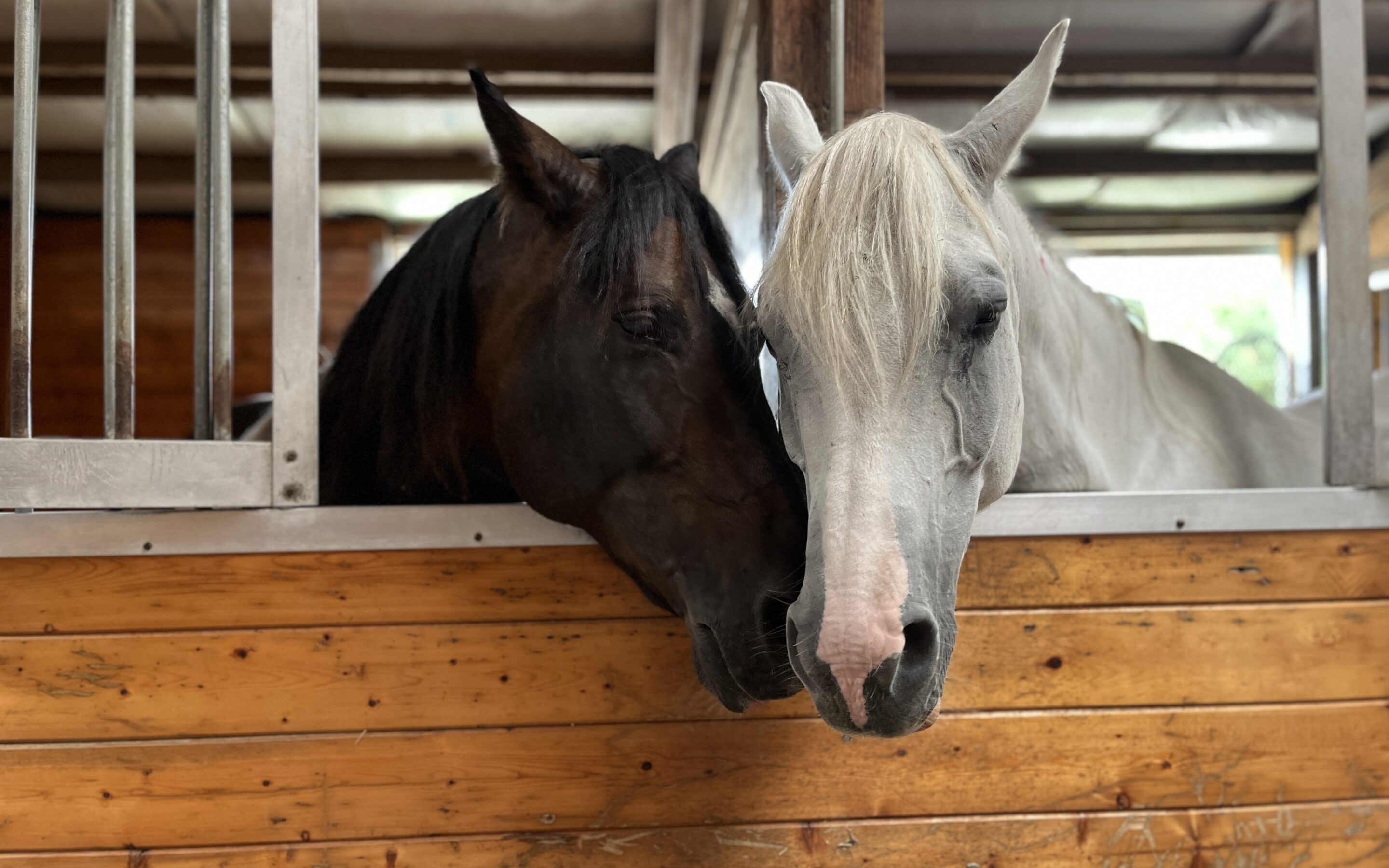
Violet and Scotty See the Vet
Here is an example of the stars aligning at SAFE: The Friday after Scotty and Violet’s arrival, there was a vet appointment on the books. Two horses needed floats, along with several who were due for one vaccination or another. Two dentals and a few pokes is a light day, especially with cooperative patients, so there is often a little part of us that seeks something (non-emergency) to tack on.. or, that if there is an emergency, it waits until the day the vets are already set to arrive. (These days, while rare, inspire us to run out for a lottery ticket, if just because the odds seem too good). So you might be able to see why, when Scotty and Violet arrived on the Monday of a Vet Week, it sent a tingle of hope along our very-fond-of-convenience spines. New horses, with the chance to almost immediately see the vet. But some boxes needed to be checked first, some questions answered.
Were they… halterable? Yes! A resounding yes, as they let us scoop their cute little noses right up into our halters that Tuesday with minimal fuss.
Okay, but were they… handleable? (not a real word, and one that moves around the mouth like a marble, but you understand) Also yes! Or, Yes* would perhaps be more appropriate, for there were certain spots on Violet that would have you risking a kick if you were to try and palpate. No matter, the important areas for a vet day (neck, head, heart) were all accessible, which left us with one final question: could we lead them into the barn?
Dear reader, something you may or may not already know about horses is that they are much like humans. In the comfort of their own homes, they are often gentle beasts, greeting you with either a kind curiosity or a tepid indifference. But when they are new, especially when they are new, they can be quite agoraphobic when it comes to leaving the house. As the gate clangs shut behind them, and they step further from the space they know so well, they begin to grow antsy, uncertain. If they are new, then they likely do not know what it is to find much comfort in their handler. Hindquarters? What’s a hindquarters? They bravely traverse into a whole new world, where unfamiliar horses call, wheelbarrows rattle from behind corners, and Sunny and Shasta.. exist. The sight of miniature horses, for most, before they become acquainted, can shake even (and perhaps especially) the most stout draft horse to its core.
So when it comes to being able to lead new horses into the barn, results may vary.
Violet and Scotty are both half siblings and very good friends. Violet made this very clear to us from day one, where as we flitted around Scotty, brushing the tangles from his mane and wrapping a tape around his belly to estimate his weight, she was in turn draping her head over his back and threatening to kick him. Classic horse love. But this kind of codependency can be detrimental, debilitating, and dangerous (the three D’s of herdboundness — look for my academic paper to be released later this year). In this case, what it meant was that if we were to remove Violet from Scotty, or vice versa, the two of them, stuck like glue, would not make things easy. And while herdboundness is important to address, for the sake of being able to get their dentals done in a timely manner, we decided to work smarter not harder.
Not as much of a mastermind plan as I’m making it out to be. Really what we decided on was bringing them in, together, and allowing them to essentially hold each other’s hand in the waiting room. This is not an uncommon technique — Brandy and Bandit get the same treatment, and Domino typically gets an emotional support Lacey when he has to see the good doctor (Lacey, on the other hand, needs no one but herself). So for the few days leading up to the appointment, we did our own leading up: Violet and Scotty, to the barn.
Violet almost immediately proved to us how secure in herself she was, walking out of the paddock on that first day like she’d been doing it her entire life. Scotty followed closely behind, his anxiety quickening his feet, but his mind remaining sound and sane, even in the face of Sunny and Shasta, as well as a pair of horses working in the arena who called out to them as they passed. These were not feral wildlings, these were horses who had likely spent a good deal of time in barns, but you know what they say about assumptions. We want to set our horses up for success whenever possible, and if that means over preparing them to walk into a barn, then so be it. Tuesday, Wednesday, Thursday we haltered them up and made the brief trek into the grooming stalls where we host our dentals. There, we stood and groomed on them to hopefully lead them to associate positive feelings with the space. We clicked pens into their necks, mocking up how their shots of sedation would go. For each little test we put them through, they did remarkably well, and we could all but feel them rolling their eyes at us as if to say, “yeah, we’re ready, can we go back to our paddock now?”
Friday came, moment of truth, and we lined them up. Scotty first, as he tended towards the more anxious, and we felt it would be a kindness to slip him his drugs first. As he grew sleepy, Violet stood patiently by, wondering if she might be able to pick out some of those pesky weeds around the front of the barn while she waited her turn.
Despite his 13 years, there was no record we had of Scotty ever having had his teeth floated. Another reason for the rush to get these two seen: who knows what was going on in that untamed mouth? It turns out, not that much. Scotty’s teeth, barring a few sharp points, were in pretty great shape. We chalked it up to good genes. At this appointment, he was also scanned for a microchip, and when none was found, implanted with one, tying him to SAFE forever. We got him up to speed on his vaccines, which he was several years overdue for, and gave his sheath a good clean while he was docile and sleepy.
Violet’s appointment ran very similarly to her half-brother’s: her own mouth hadn’t seen a drill since 2017, but it too was in good shape, barring those same minor points. She also received a microchip and an update to her vaccines. Because of her high body condition score, our vets also suggested we draw blood to check her insulin and her thyroid levels, just in case. While her thyroid was normal, her insulin was just slightly over normal range — a figure that our vet expected to come down with weight loss.
Apart from Violet’s (over)weight, our vet gave them both a clean bill of health. We brought them into adjoining stalls to come out of their sedation, where Scotty, who was slightly more awake having gone first, called to his friend as she stumbled in next to him. We opened their windows as to avoid any stressful messes, where the two quickly reunited. Nose-to-nose, they slept off their drugs together, where, when they were sufficiently awake, they made the trek back to their paddock.
Another health-keeping note: the intake fecal we ran on them revealed the highest fecal egg count we have ever seen here at SAFE. Violet had a count of 2,168 EPG and Scotty had a whopping 3,416 EPG! We wonder if some of those extra lbs on Violet couldn’t have been caused by the ever so delicious sounding “worm belly.” We have since dewormed the pair, and have been monitoring them extra carefully in the event that such a serious parasite extermination causes any health events. So far, so good, and we hope that at our recheck fecal in a few weeks we see those numbers way, way down.
In the meantime, barring any emergencies, Violet and Scotty can check seeing the doctor off their list for the next little while.
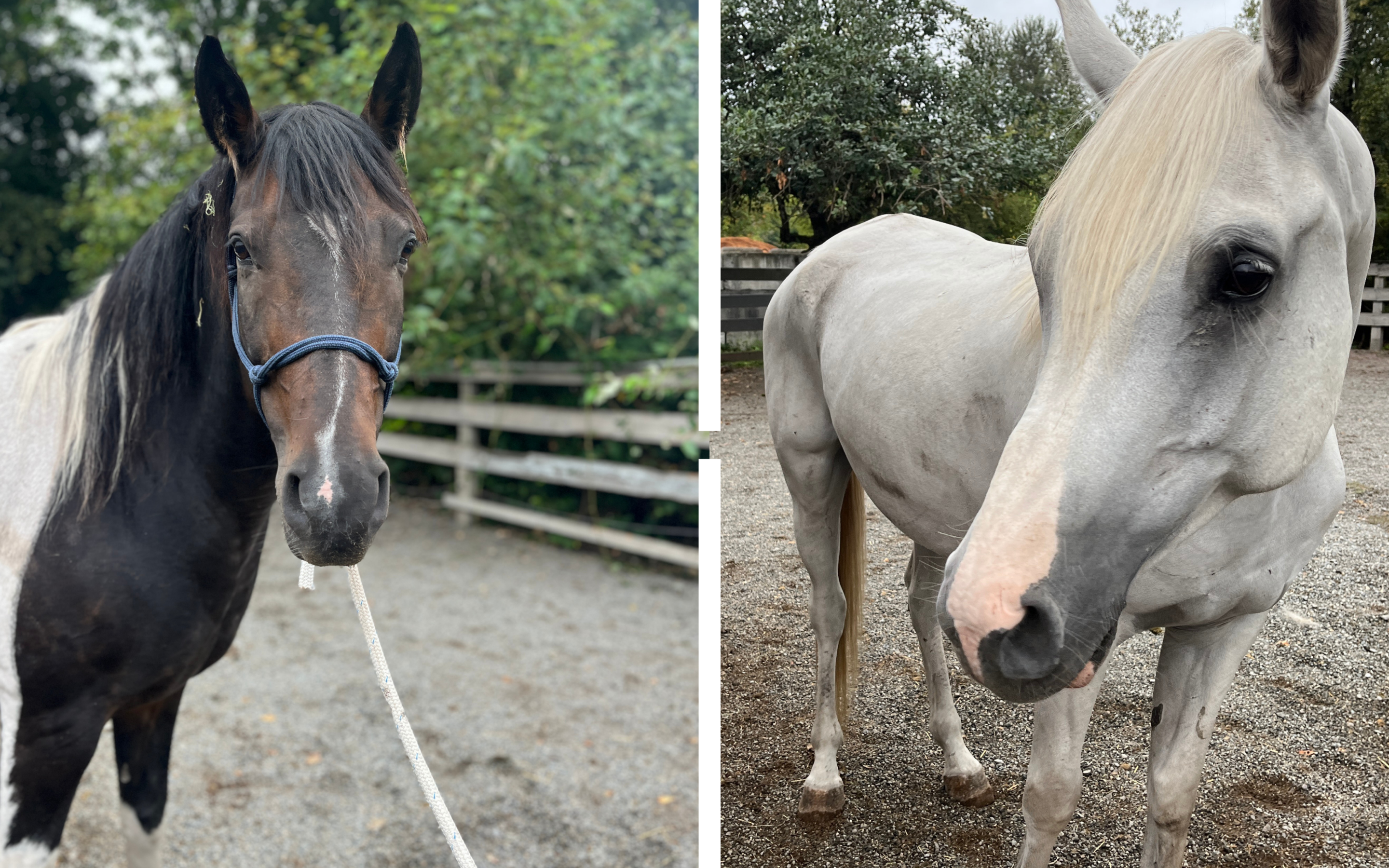
Welcoming Violet and Scotty
We have two new additions to our herd this week: Scotty, a 12-year-old registered Arabian gelding, and his half-sister Violet, an 11-year-old Arab cross mare. They came to us at the request of a daughter, whose elderly mother had been their caretaker after the death of her horseman husband, but who was no longer feeling equipped for the responsibility. The horses had both been out of work for a number of years, and were out of date on their vet and farrier care, but were not in too bad of shape overall.
We were under the impression that the mare would be difficult to catch, and therefore prepared our trailer with panels in the event that we needed to make a chute. But when we arrived at the property, we found her quite willing to be caught, and both horses loaded just fine.
Scotty, the gelding, is a registered Arabian gelding, who was born a chestnut but completely transformed in color as he aged. It’s hard not to see a light grey horse and not conjure visions of unicorns. Once we brushed the fairy tangles (a very polite way of saying major snarls) out of his mane, it did well to match this aesthetic too. Our first impressions of Scotty were of a slightly nervous horse, a little shy about being caught, but quite gentle. Unlike some horses, we knew a little more about his past — he had been started under saddle, and was ridden regularly until 2017. He has been out of work since then, but he seems to have a good head on his handsome shoulders, and we hope that he will be an easy restart in our training program.
Violet is a truly brick house of a mare — if not a 9 on the BCS, she’s a definite 8 point something. We don’t like to body shame around here, but a diet was definitely in order. Violet was also started under saddle once upon a time (when she was three, to be specific) but like her half-brother, she also appears to have a very solid mind. She has a tendency to pull a sour expression on people, but if you set a firm boundary (aka, ‘no, you’re actually not allowed to bite me’) we have found that she respects it.
On the heels of the Gig Harbor horses who arrived untouchable, it is a nice change of pace to have horses come in who have some good stuff in their past. We will see what we uncover as we go along and learn more about them, but regardless of all that, we love them already!

